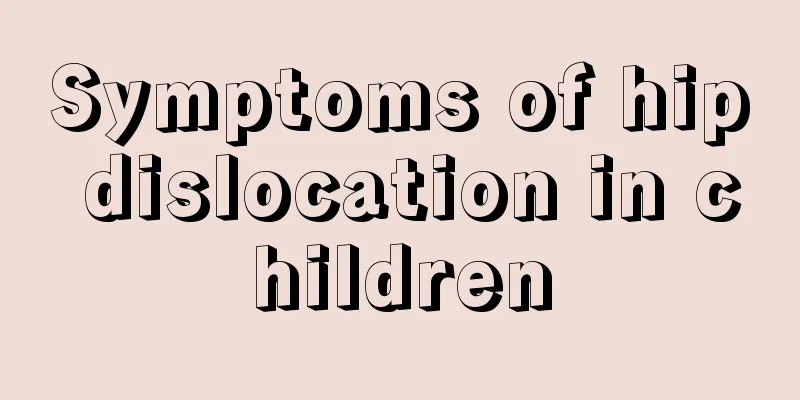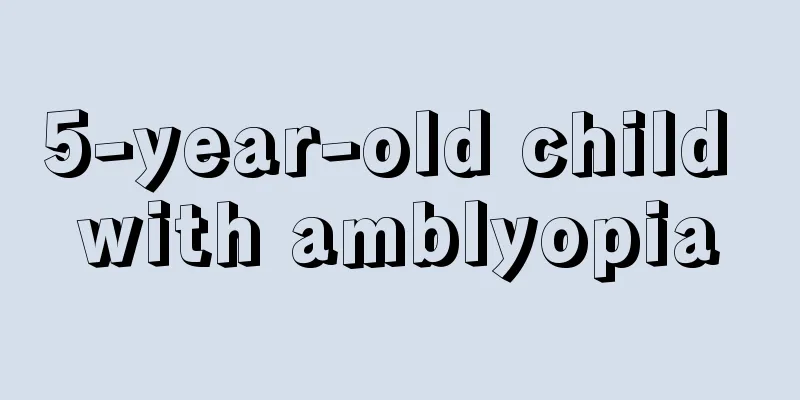Symptoms of hip dislocation in children

|
Most of the time, hip dislocation in adults is caused by external force, but if hip dislocation occurs in children, there is a high probability that it is caused by congenital malformation. Therefore, hip dislocation in children is very serious. Parents should detect hip dislocation in their children in time and take them to the hospital for treatment. Therefore, it is necessary to understand the symptoms of hip dislocation in children. Symptoms of hip dislocation in children Hip dislocation in children is one of the more common congenital malformations. Dislocation is more common later in life and exists at birth. It is mainly due to congenital malformations or abnormalities in the acetabulum, femoral head, joint capsule, ligaments and nearby muscles, which lead to joint looseness, subluxation or dislocation. In addition, abnormal position of the fetus in the uterus and excessive flexion of the hip joint can also easily cause this disease. The following signs should be considered as a possible cause of congenital dislocation of the hip: 1. The skin wrinkles on the inner thighs are asymmetrical, and the wrinkles on the affected side are deeper and more numerous. 2. The perineum of the child is widened, which is more obvious when the dislocation is bilateral; 3. The patient has less hip joint movement and limited movement. The pedaling force is weaker than that of the healthy side. It is often in a flexed position and cannot be straightened. 4. The patient's limbs are shortened, and there is a snapping sound or feeling when the patient's lower limbs are pulled, and sometimes the patient will cry. How to treat pediatric hip dislocation 1. Traction can also be used for reduction of the femoral arthritis in infants under 6 months old. After traction, the hip joint is abducted and the femoral head slowly returns to its original position. 2. Infants and young children aged 6 to 18 months can be reduced by manual manipulation. The manipulation should be gentle, and plaster should be used for fixation after reduction. It takes 3 months for the plaster to fix the hip bone, and the fixation time is used to allow the femoral head and acetabulum to grow together. 3. The bones of babies over 18 months old have a certain hardness and are not suitable for conservative treatment. Surgical treatment is more common. If parents find that their baby suffers from pediatric hip dislocation, they should not be too afraid or worried. This type of disease can be corrected through reduction training and surgery. Although it may take a longer time, if you are patient, you can recover. It is worth noting that different correction methods are recommended for patients of different ages. In short, they should have confidence in recovery. |
<<: How to avoid scars on children's faces
>>: Dislocated front teeth in children
Recommend
How can teenagers prevent hair loss?
Due to heavy schoolwork, teenagers now face no le...
One year old baby's fingers peeling
Babies over one year old are generally not in goo...
How to supplement children's vitamin deficiency
Vitamins are essential nutrients for the human bo...
Will children with roseola become sleepy?
Roseola is a common problem in children, but we a...
Can children with cerebral dysplasia be cured?
Brain maldevelopment in children is a relatively ...
What are the symptoms of a child's spleen problem?
The spleen is very important to humans. If a chil...
Why does my baby shake his head when he has a fever?
It is common for babies to be weak because they a...
Is it normal for a four month old baby to spit bubbles?
Is it normal for babies to spit bubbles? Nowadays...
Rectal medication for children's colds?
It is very common for children to catch a cold. C...
What to do if something gets into your child's nose
Children are particularly curious about everythin...
Causes and suggestions for high myocardial enzymes in newborns
We all know that newborn babies have relatively p...
Why does my child have a stomachache in the morning?
Some children always say that they have stomachac...
What are the causes of precocious puberty in children?
In fact, the symptoms of precocious puberty are n...
What is wrong with babies with severe brain retardation?
Nowadays, a small number of babies are found to h...
Symptoms of blue veins on baby's eyelids
Our careful parents will find that blue veins can...









